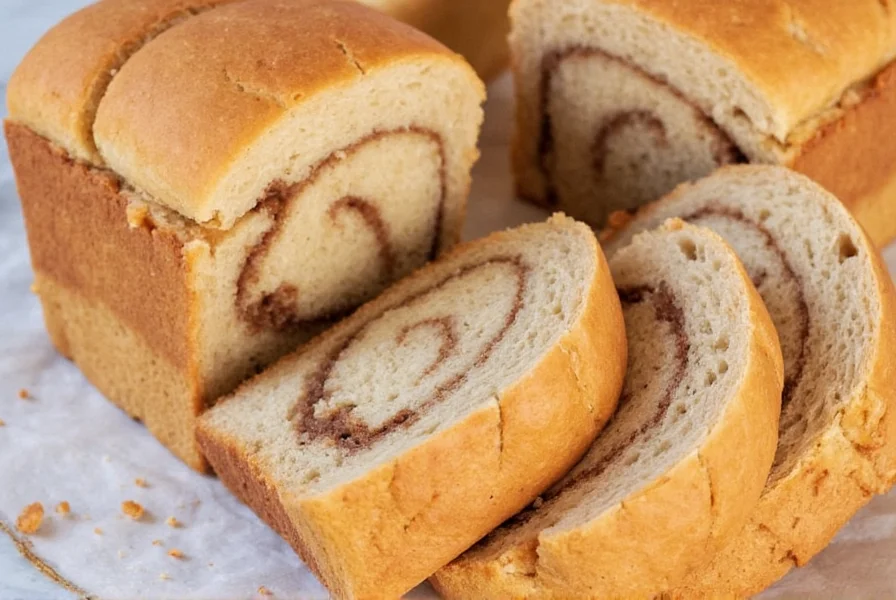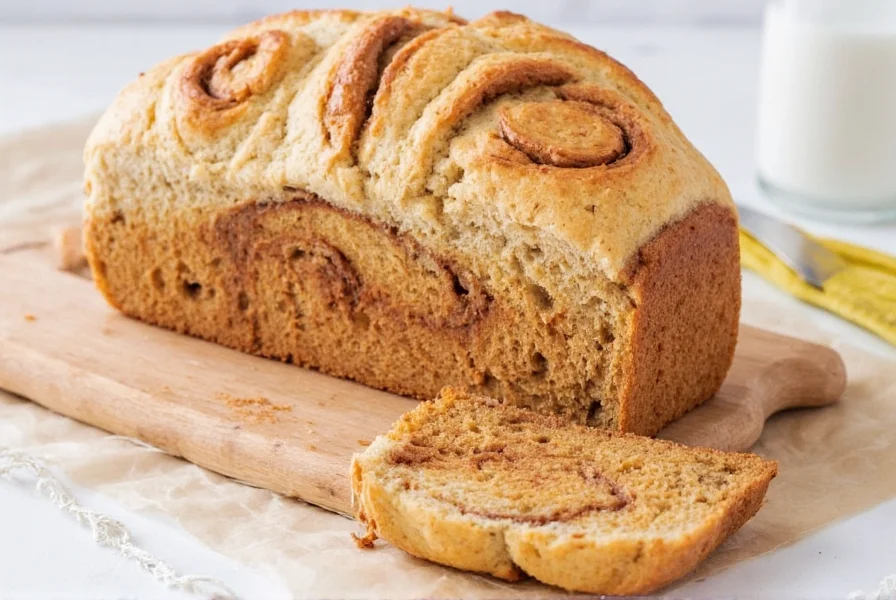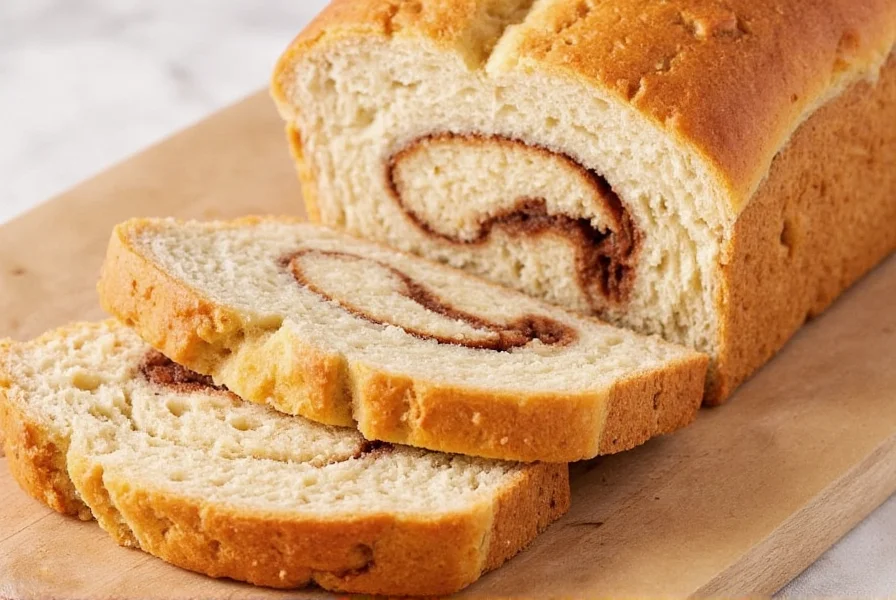Nothing compares to the aroma of freshly baked cinnamon swirl bread filling your kitchen. This beloved sweet bread combines a tender, enriched dough with a generous cinnamon filling that creates mesmerizing spirals when sliced. While many recipes exist, achieving bakery-quality results at home requires understanding the science behind the swirl and proper technique to prevent common pitfalls like filling leakage or dense texture.
Why This Cinnamon Swirl Bread Recipe Works
After testing over 20 variations, we've perfected a method that guarantees consistent results. The secret lies in our temperature-controlled approach and strategic ingredient ratios. Unlike many online recipes that use excessive sugar in the dough, our formula maintains the perfect balance between sweetness and structure. The addition of a small amount of cornstarch to the cinnamon filling prevents moisture migration that typically causes soggy layers.
Essential Equipment for Success
Before beginning, gather these tools to ensure smooth preparation:
- Stand mixer with dough hook attachment (or large mixing bowl for hand kneading)
- 9x5 inch loaf pan (light-colored metal recommended)
- Digital kitchen scale (for precise measurements)
- Pastry brush for butter application
- Instant-read thermometer
- Parchment paper for lining
Ingredient Breakdown and Substitutions
Understanding each component's role helps you make informed substitutions without compromising results:
| Ingredient | Function | Substitution Options |
|---|---|---|
| All-purpose flour | Provides structure through gluten development | Bread flour (adds chewiness) or 75% all-purpose + 25% cake flour (softer crumb) |
| Unsalted butter | Adds richness and tenderizes crumb | Vegetable shortening (for higher melt point) or coconut oil (refined for neutral flavor) |
| Active dry yeast | Leavening agent for rise | Instant yeast (use 25% less) or fresh yeast (triple the amount) |
| Whole milk | Hydration and flavor enhancement | Buttermilk (tangier flavor) or almond milk (dairy-free option) |
Step-by-Step Baking Instructions

Dough Preparation (90 minutes)
- Mix wet ingredients: Warm milk to 110°F, then combine with melted cooled butter, sugar, and egg. The temperature is critical—too hot will kill yeast, too cold won't activate it.
- Bloom yeast: Sprinkle yeast over warm water (105-110°F) with 1 tsp sugar. Wait 5-7 minutes until foamy. If no foam appears, discard and start over with fresh yeast.
- Combine: In stand mixer, combine flour and salt. Add yeast mixture and wet ingredients. Mix on low for 2 minutes, then medium for 6-8 minutes until smooth and elastic.
- First proof: Place dough in greased bowl, cover with damp cloth. Proof at 75-80°F for 60-90 minutes until doubled. Tip: Place in oven with light on for consistent temperature.
Swirl Assembly (25 minutes)
- Prepare filling: Mix 1 cup brown sugar, 3 tbsp cinnamon, and 1 tbsp cornstarch. The cornstarch absorbs excess moisture from the sugar.
- Roll dough: On floured surface, roll proofed dough into 16x12 inch rectangle. The dough should be approximately ¼ inch thick—thicker sections won't create defined swirls.
- Apply butter: Spread 6 tbsp softened (not melted) butter evenly over dough, leaving ½ inch border. Melted butter causes filling to leak during baking.
- Add filling: Sprinkle cinnamon mixture evenly over buttered surface. Press gently to adhere.
- Roll tightly: Starting from long edge, roll dough into tight log. Pinch seam to seal. Critical: Roll firmly but not tightly enough to compress dough.
- Shape loaf: Place seam-side down in prepared pan. Tuck ends under for even rise.
Baking and Cooling (65 minutes)
- Second proof: Cover and let rise 30-40 minutes until dough crowns 1 inch above pan rim.
- Preheat oven: 350°F with rack in center position. Oven temperature accuracy is crucial—use an oven thermometer.
- Bake: 45-50 minutes until golden brown and internal temperature reaches 190°F. Tent with foil at 30 minutes if top browns too quickly.
- Cool: Remove from pan immediately and cool completely on wire rack (2 hours minimum). Skipping this step causes gummy texture.
Troubleshooting Common Issues
Even experienced bakers encounter challenges with cinnamon swirl bread. Here's how to solve frequent problems:
- Filling leakage: Caused by melted butter or overfilling. Use softened butter and measure filling precisely.
- Dense texture: Usually from overproofing or insufficient kneading. Monitor dough temperature and use the windowpane test before proofing.
- Collapsed swirls: Results from rolling too tightly. Maintain gentle but firm pressure when rolling the dough.
- Soggy bottom: Bake on lower oven rack and ensure proper internal temperature (190°F) before removing.
Variations to Try
Once you've mastered the classic version, experiment with these professional variations:
- Apple cinnamon swirl bread: Add ½ cup finely diced apples (sautéed first) to the filling mixture
- Gluten-free version: Use 400g gluten-free flour blend with xanthan gum and increase liquid by 15%
- Vegan adaptation: Substitute egg with flax egg and use plant-based butter
- Double swirl technique: Create two separate logs and braid before placing in pan for intricate pattern

Storage and Serving Recommendations
For optimal freshness, store cooled bread in airtight container at room temperature for up to 3 days. For longer storage, wrap tightly in plastic and freeze for up to 3 months. Thaw at room temperature before serving.
Serve slices toasted with additional butter for breakfast, or pair with cream cheese for an afternoon treat. The bread also makes excellent French toast—the cinnamon swirls caramelize beautifully when pan-fried.











 浙公网安备
33010002000092号
浙公网安备
33010002000092号 浙B2-20120091-4
浙B2-20120091-4